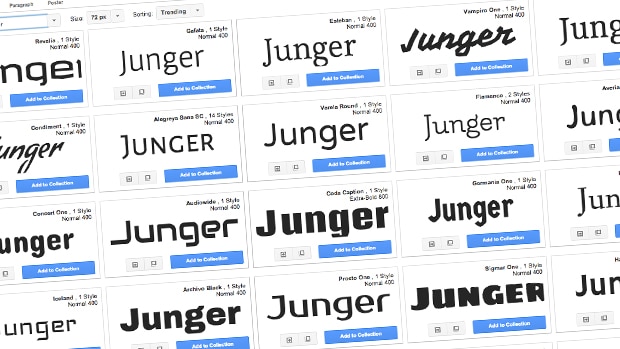Why We Love Google Fonts
by Jason Forrest
Insights / Website Design /

Back in the dark ages of web design, as a designer your typographic options were limited to fonts that were considered “web safe.” That means you could only use fonts that were common to a majority of all user’s systems. If the font you chose was not present on their machine, the browser would select a default font either specified by the user’s browser settings or by the designer’s stylesheet.
It doesn’t sound awful, but in reality, the total amount of web safe fonts even today are quite few. That’s why so many sites use Arial, Helvetica, Georgia and Times New Roman fonts.
Google Fonts, and similar services like Font Squirrel, Typekit, and Cufón, allow a designer much more typographic freedom.
Comparing Cufón, Typekit, Font Squirrel and Google Fonts
Google Fonts isn’t perfect, but the other font options each have several downsides. For example, while Cufón will allow you to render all kinds of fonts, they are not selectable. This is because Cufón renders fonts as vector images instead of livetype. It also makes any kind of text decoration difficult.
Typekit has all sorts of beautiful fonts hosted on their own private servers, and if you have the budget for the annual fee, then it can be a great option. However, it is not rendered by all browsers consistently, and can often appear jagged and pixely. This pretty much holds true for the other major paid services (Fonts.com, Font Spring, and Myfonts).
In many ways, Font Squirrel is very similar to using the Google Fonts API. It makes use of the @font-face rule to render the font on your website. All the fonts it hosts are commercially free-to-use, which takes a lot of licensing worry out of process. It also includes all the HTML and CSS code you’ll need to make the font render correctly.
The Real Reason Google’s the Winner
Google Fonts are free to use, and because of Google’s ubiquity, they may already be cached in your user’s browser, decreasing load times on your site.
But the primary reason we love Google Fonts is that they have hundreds of fonts at their disposal, and often they have near identical replacements for a lot of famous fonts, saving you and your client a lot of money in expensive licensing fees.
As Junger blogged about yesterday, things are always changing and we’re constantly working to stay up to date. We’d love to hear what you like to use best. Contact us today and let’s talk about web fonts.




